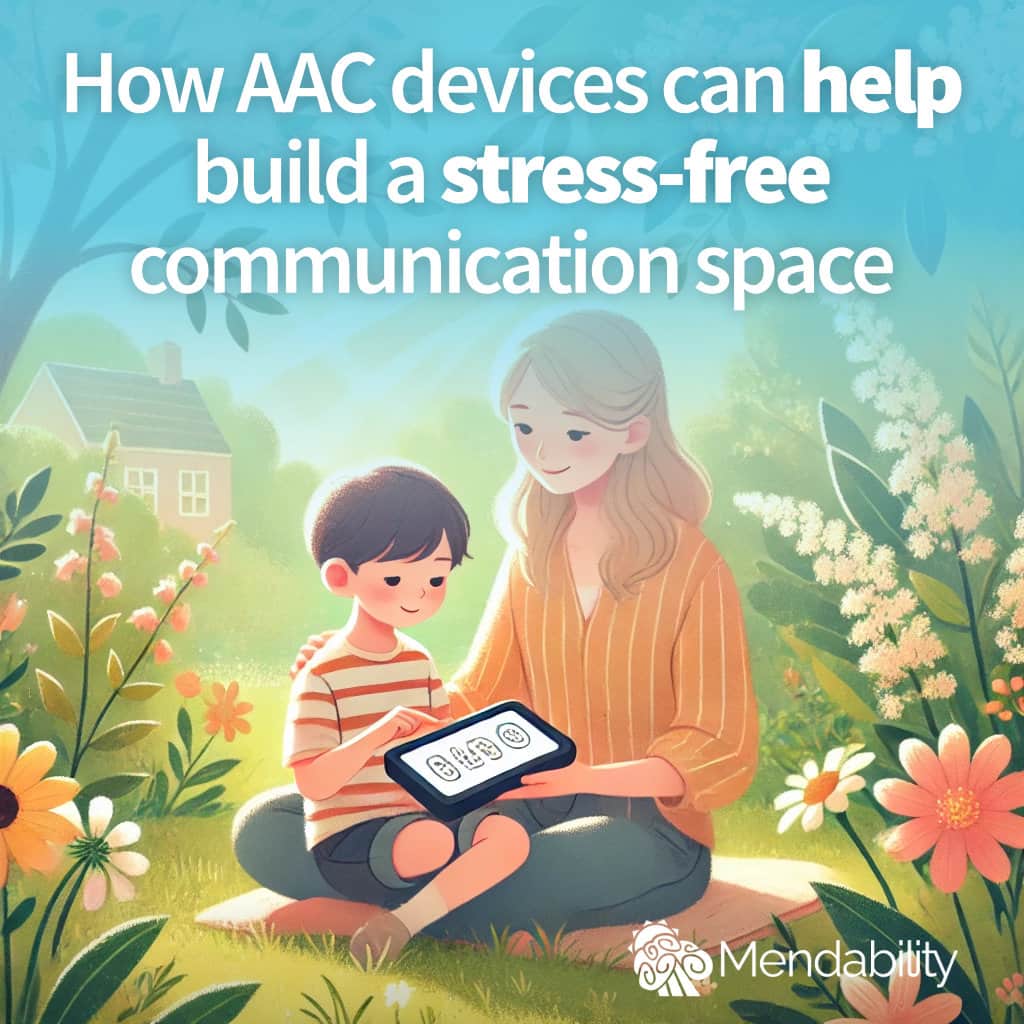The bridge to better communication: It’s not just about the device
When it comes to helping nonverbal children communicate, many parents feel overwhelmed by the options.
Augmentative and Alternative Communication (AAC) devices often seem like the answer, but using them effectively is another challenge altogether.
Lenora Edwards, a seasoned speech-language pathologist, offers a refreshing perspective: AAC devices are not just tools—they’re bridges to deeper, more meaningful communication.
“AAC devices should never replace human interaction. They’re meant to enhance it, making communication more accessible and less stressful for your child.”

Welcome to ‘The Happy Sensory Corner’ – the podcast where we explore the world of sensory enrichment and environmental enrichment to treat neurological conditions.
Through insightful discussions, interviews with experienced experts in a variety of fields, from nutrition to psychology, and inspiring stories of resilience, we uncover the secrets to success in raising a child with complex needs. Discover practical strategies, sensory enrichment protocols, and evidence-based practices that can transform lives one episode at a time.
Our guest, John Fela, shares his personal journey of raising a nonverbal son with autism and finding his role as a caregiving father—after years of not knowing where he fit in.
We cover:
• How dads process disability differently than moms
• What dads actually need but rarely ask for
• What saved John’s marriage… until it didn’t – and how he rebuilt again
• The emotional cost of “not being the breadwinner” in a special needs family
• The power of a single dad friendship – and why it matters more than you think
Episode Highlights
2:14 – “There’s this huge gap in the support space for dads.”
6:45 – John opens up about growing up with an emotionally absent father and how it shaped his commitment to being present
12:13 – “I had no community. I had to get community.” – John’s “Tale of Two Parking Lots” shows how connection saved him after deep isolation
19:59 – The divorce he didn’t see coming and how support networks made all the difference
32:20 – “If it’s not on the calendar, it doesn’t happen.” – How penciling in self-care and couple time helped protect his marriage
34:37 – “Moms become best friends over wine. Dads need a reason to show up.” – What it takes to build authentic dad groups
48:04 – John shares how local legend Wayne Messmer sang at his wedding and why that gesture still chokes him up
50:00 – The celebrities who quietly support the disability world—and the surprising network John is part of

This approach resonates with parents who may have felt frustrated or unsure about integrating technology into their child’s daily life.
Instead of seeing AACs as a last resort, Lenora encourages parents to use them as a consistent part of their routine, fostering trust and building confidence in their children.
Consistency in usage can transform how your child communicates, turning everyday moments into opportunities for connection.
Consistency is everything: How to build a routine that works
Parents often struggle with establishing a consistent routine for their children, especially when dealing with the additional challenges of communication difficulties.
But according to Lenora, consistency is the foundation of successful communication.
When a child knows what to expect, they feel secure.
This is particularly important when integrating AAC devices into daily life.
The key is to make AAC use a regular, expected part of your child’s day—not just something that happens during therapy sessions.
Routine builds trust, and this trust is what leads to breakthroughs in communication.
“Every interaction is an opportunity. Be present, model the behavior, and give your child the time they need to respond.”
Lenora’s advice here is invaluable: rather than pressuring your child to communicate, which often leads to shutdowns, it’s more effective to patiently model the behavior you wish to see.
This patience allows your child to process and respond, making communication feel more natural and less forced.
Beyond the screen: Engaging with your child
One of the biggest misconceptions about AAC devices is that they can replace traditional forms of communication.
Lenora is quick to dispel this myth.
“It’s not just about the device. It’s about how you engage.”
AAC devices are not a substitute for human interaction—they are a support system.
Using them effectively means ensuring that they enhance your child’s ability to connect with you and others, rather than becoming a barrier.
Lenora emphasizes the importance of being present during these interactions.
Every time you use an AAC device with your child, it should be an opportunity to engage, not just to instruct.
Make these moments about connection.
Ask open-ended questions, give your child time to respond, and celebrate their efforts, even if they don’t respond exactly as you’d hoped.
This approach not only reduces frustration but also encourages your child to see communication as a positive experience.
Rethinking AACs: A fresh perspective
If you’ve tried using AAC devices before and felt they weren’t the right fit, Lenora encourages you to reconsider.
When used correctly, AACs can unlock new levels of understanding between you and your child.
It’s not just about having the right tool—it’s about having the right approach.
“Even if AACs haven’t felt right in the past, they deserve another look.”
This perspective challenges the common assumption that AAC devices are only useful for children who are nonverbal.
In reality, these devices can be beneficial at various stages of speech development, offering a bridge to verbal communication while reducing the stress and frustration often associated with speech delays.
—
The power of patience and presence
Lenora’s approach to using AAC devices is grounded in patience and presence.
She advises parents to slow down, give their children time to respond, and celebrate every attempt at communication, no matter how small.
This method is not only effective but also fosters a stronger bond between parent and child.
By focusing on the connection rather than the outcome, parents can create a stress-free communication environment where their child feels supported and understood.
Additional Reading
- American Speech-Language-Hearing Association – AAC
- Mendability – Sensory Enrichment Therapy
- Harvard Health Publishing – The power of routines in child development

